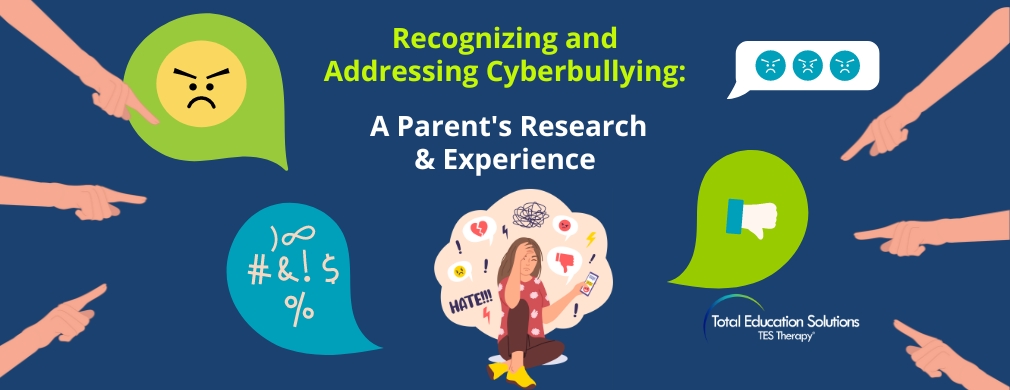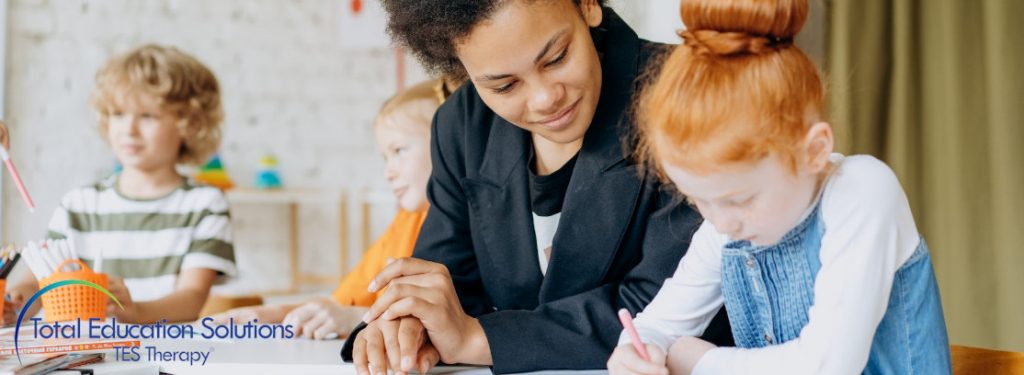Recently the topic of Structured Literacy™ teaching has sparked considerable interest. Educators and parents often have questions about this approach:
- What does it involve?
- How is it different from the ways that children are usually taught to read?
- Why is it effective for children with dyslexia and other learning difficulties?
Here is an explanation of what structured literacy means and why schools should use it.
What Is Structured Literacy?
Structured literacy (SL) approaches emphasize highly explicit and systematic teaching of all important components of literacy. These components include both foundational skills (e.g., decoding, spelling) and higher-level literacy skills (e.g., reading comprehension, written expression). SL also emphasizes oral language abilities essential to literacy development, including phonemic awareness, sensitivity to speech sounds in oral language, and the ability to manipulate those sounds.
Explicit teaching means that teachers clearly explain and model key skills; they do not expect children to infer these skills only from exposure. Systematic means that there is a well-organized sequence of instruction, with important prerequisite skills taught before more advanced skills. For instance, children master decoding and spelling simpler consonant-vowel-consonant words (e.g., tap) with short vowel sounds before learning more complex short-vowel words (e.g., stamp or tapped) with consonant blends or affixes.
Explicit, systematic teaching requires teacher-led instruction. Teacher-led instruction also enables educators to provide prompt, targeted feedback in response to children’s mistakes, another characteristic of SL. For example, suppose that children are practicing reading words with short vowel sounds and consonant blends (e.g., stamp) aloud, and a child misreads stamp as stump. Rather than just telling the child the word, the teacher might point to the vowel to draw the child’s attention to it. If that cue did not help, the teacher would provide additional feedback focused on the child’s specific error (e.g., “short sound for a is pronounced /ă/”).
…the emphasis is on patterns rather than specific words. This is because the teacher is trying to foster a decoding (and encoding) process or strategy—instead of teaching children to memorize individual words by overall visual appearance.
Structured literacy approaches use books and other instructional materials that lend themselves to this kind of teaching. Educators teach from a sequence of phonics materials proceeding from use of simpler to more complex patterns. Children read books containing the phonics word patterns they have been taught. Reading of texts and phonics instruction are coordinated so that as children’s decoding skills develop, they are able to read increasingly complex texts. Similarly, spelling is coordinated with decoding, so that each reinforces the other.
Here is an example of coordination of decoding and spelling. Suppose that beginning decoders are learning to decode simple consonant-vowel-consonant (CVC) words such as tap, win, or fit. Their spelling instruction would employ similar CVC word patterns, such as nag, sip, and hat. Notice that the emphasis is on patterns rather than specific words. This is because the teacher is trying to foster a decoding (and encoding) process or strategy—instead of teaching children to memorize individual words by overall visual appearance.

Figure 1 provides one example of a structured literacy activity for decoding and spelling, a phoneme-grapheme mapping task. The teacher dictates a chain of patterned words for children to spell in a grid, one word at a time, with one phoneme (speech sound) per box. (For decoding, the teacher can write the words and have children decode them.) The chain involves a variety of single-phoneme changes in words, not just changes in the first phoneme (spelling) or grapheme (decoding).
Words in the chain are carefully chosen. All are phonetically regular and involve only letter-sound (grapheme-phoneme) relationships children have been taught. For example, in the second row of the grid, tar would not be an appropriate choice to follow tap, because tar contains a vowel-r pattern (ar) with a different vowel sound that children have not been taught at this early stage.
This SL activity and other similar activities promote careful attention to all the letters in a word—and all the phonemes they represent. They help children to grasp the alphabetic principle—the idea that reading involves a code in which sounds in spoken words map onto letters (graphemes) in printed words—as well as to develop strong phonemic awareness, decoding, and spelling skills.
They help children to grasp the alphabetic principle—the idea that reading involves a code in which sounds in spoken words map onto letters (graphemes) in printed words—as well as to develop strong phonemic awareness, decoding, and spelling skills.
A number of instructional programs and approaches have the features of SL. There is not one “best” SL approach for all children with dyslexia or other learning problems. Still, some instructional approaches and materials are simply incompatible with SL. Unfortunately, many of these are widely used in schools.
How Is Literacy Usually Taught?
The approach to literacy instruction in many schools is not highly explicit or systematic. Important foundational skills (e.g., phonemic awareness and decoding) often receive limited emphasis, even for beginners or struggling decoders (Moats, 2017).
Typical literacy instruction frequently uses loosely structured types of approaches, such as “reader’s workshop” or “writer’s workshop.” Considerable classroom time is spent having children work independently on reading and writing tasks of their own choosing. Teachers do supervise this work and spend time “conferencing” with individual children. However, the way that instruction is organized means that time for teacher-led, explicit instruction is minimal.
Another key problem is that commonly used instructional materials do not lend themselves to explicit, systematic teaching of important foundational components of literacy. These problems may undermine the effectiveness even of a highly capable teacher.
For example, many schools do not provide teachers with a systematic phonics program and accompanying sets of words, texts, and materials. It is very difficult to teach phonics well, especially to large groups of children or those who struggle, without appropriate instructional materials.
Instead, teachers may be told to post “word walls” in the classroom; these “word walls” often contain common words that vary greatly in spelling patterns and pronunciation. (See Figure 2.) Some words (e.g., are, again) are irregular (i.e., exceptions to phonics generalizations). Other words are regular, but involve a wide range of patterns, including some difficult ones for beginners (e.g., two-syllable words like better). These kinds of materials do not help children understand the predictability of phonics patterns in words. Instead, they encourage memorization of whole words, a strategy that will not help children learn to read well in the long run.

More About Phonics in Typical Literacy Instruction
A frequent response from schools using typical reading curriculum is, “But we do teach phonics!” This is generally true. However, in addition to limited emphasis and lack of explicitness, there are other problems with phonics instruction in many schools.
Research over the past couple of decades has suggested that, although any phonics is better than no phonics at all, certain types of phonics approaches are more effective than others. Specifically, an initial phoneme-grapheme level approach—that is characteristic of structured literacy—is more effective than a larger-unit phonics approach such as onset-rime, analytic phonics, or word families. (See Brady, 2011, for a review.) Typical literacy instruction often favors a larger unit approach to phonics.
Following are examples of how different phonics approaches might teach children to decode an unfamiliar word such as stack:
- In a word families approach, children would learn to decode stack by comparing it to a known word such as back.
- In an onset-rime approach, children would learn the sound for two parts of the word, the onset (st→/st/) and the rime (-ack→/ăk/). They would then blend the two parts to form the word (/st/) →/ăk/)→/stack/).
- In a phoneme-grapheme level approach, children would learn sounds for the graphemes that represent each phoneme (s→/s/ t→/t/ a→/ă/and ck→/k/), then how to blend all four parts into a whole word (/s/ /t//ă/ /k/ →/stack/.
Why is an initial phoneme-grapheme level phonics approach generally preferable to other phonics approaches? One reason may be that the phoneme-grapheme approach promotes closer attention to spelling (grapheme) and speech sound (phoneme) sequences in words than do other phonics approaches. Careful attention to letter sequences in words is fundamental for developing good decoding skills. Also, this approach generally includes explicit teaching of phoneme segmentation and blending, important phonemic awareness skills—foundational skills for both spelling and decoding.
In a phoneme-grapheme level approach, children would eventually learn to attend to larger patterns in words, including common orthographic patterns, such as graphemes (e.g., ar, ee, au, igh) and morphemes (e.g., common roots/base elements, prefixes, and suffixes). Some very common morphemes (e.g., -ing, -ed [indicating tense]) often would be taught relatively early. However, an emphasis on larger units mostly comes later, as children advance to more complex words, rather than at the very beginning of phonics teaching. Furthermore, all of these elements—phonemes, graphemes, and morphemes—would be taught in an explicit, systematic way.
In addition to basic phonics instruction, children need to practice applying their phonics skills while reading texts (Foorman et al., 2016). While their decoding is still developing—and particularly for children who struggle with decoding—oral reading of texts with teacher guidance and feedback is essential. Texts should include many words that children can decode. Otherwise, children may just guess at words.
Unfortunately, in typical literacy instruction, children often read leveled or predictable texts. These texts use many words that poor decoders cannot read, with pictures that usually encourage guessing.
For instance, a predictable text about a child getting ready to go to school in the morning might have sentences such as William found his lunch, William found his crayons, and William found his backpack, with accompanying pictures of William getting his lunch, crayons, and backpack. With words spelled with varied and relatively complex phonics patterns, and pictures that enable guessing, this type of text does not encourage children to look carefully at the letters in words to decode them—and the letters and their sequence are what make one word different from another.
Teacher feedback to children’s decoding errors also matters. This feedback should emphasize attention to the print and application of decoding skills, as would occur as part of a structured literacy approach. However, many teachers are trained to believe that small errors such as reading a for the or this for that can be ignored, because they do not greatly alter meaning (Spear-Swerling, 2018). Nevertheless, beyond the earliest grades, good readers decode with a very high degree of accuracy and do not make frequent errors of this type (e.g., Daane, Campbell, Grigg, Goodman & Oranje, 2005).
Are there children who learn to read well with typical literacy practices? Certainly. However, the typical literacy practices outlined in this section are not nearly as effective for children with dyslexia and other literacy difficulties as are structured literacy practices (Fletcher, Lyon, Fuchs, & Barnes, 2018; Foorman et al., 2016; International Dyslexia Association, 2017).
Why Are Structured Literacy Programs Effective?
First, SL explicitly and effectively addresses foundational literacy skills, a core need of children with dyslexia as well as many other struggling students. Also, in all components of literacy, SL emphasizes teaching that is clear, systematic, and unambiguous to the learner—all important qualities for students experiencing difficulty.
Finally, SL instruction can be very engaging to struggling readers. Explicit teaching has been criticized as “drill and kill” that dulls interest and creativity, with typical literacy practices presented as inherently more engaging to children. Little research supports this view (Archer & Hughes, 2011).
Reading children’s literature with beautiful pictures or extended opportunities to write for pleasure can indeed be motivating—but not for students who cannot decode or write well enough to enjoy them. Helping children to succeed at literacy is a key way to motivate and engage them, as well as to prepare them for ongoing, higher-level literacy learning.
Moving Forward
Structured literacy approaches are much more successful than many typical literacy practices for meeting the needs of children with dyslexia and other literacy problems. SL prioritizes teacher-led, explicit instruction in all important components of literacy. Initial phonics instruction uses a phoneme-grapheme (encoding) and grapheme-phoneme (decoding) level approach. Texts and other materials are well coordinated with the phonics program.
If educators are prepared to implement this kind of literacy instruction, and are given appropriate instructional materials, they can reach a much wider range of children than with typical literacy practices. Virtually all teachers want to be effective with their students. Let’s give them the knowledge and tools to do so.

References
Archer, A., & Hughes, C. (2011). Explicit instruction: Effective and efficient teaching. New York, NY: Guilford.
Brady, S. (2011). Efficacy of phonics teaching for reading outcomes: Indications from post-NRP research. In S. Brady, D. Braze, & C. Fowler (Eds.), Explaining individual differences in reading: Theory and evidence (pp. 69–96). New York, NY: Psychology Press.
Daane, M. C., Campbell, J. R., Grigg, W. S., Goodman, M. J., & Oranje, A. (2005). Fourth-grade students reading aloud: NAEP 2002 Special Study of Oral Reading (NCES 2006-469). U.S. Department of Education, Institute of Education Sciences, National Center for Education Statistics. Washington, DC: Government Printing Office.
Fletcher, J. M., Lyon, G. R., Fuchs, L. S., & Barnes, M. A. (2018). Learning disabilities: From identification to intervention (2nd ed.). New York, NY: Guilford.
Foorman, B., Beyler, N., Borradaile, K., Coyne, M., Denton, C. A., Dimino, J.,…Wagner, R. (2016). Foundational skills to support reading for understanding in kindergarten through 3rd grade (NCEE 2016-4008). U.S. Department of Education, Institute of Education Sciences, National Center for Education Evaluation and Regional Assistance. Washington, DC: Government Printing Office.
International Dyslexia Association. (2017). Effective reading instruction for students with dyslexia (fact sheet). Retrieved fromhttps://dyslexiaida.org/effective-reading-instruction/
Moats, L. C. (2017). Can prevailing approaches to reading instruction accomplish the goals of RTI? Perspectives on Language and Literacy, 43, 15–22.
Spear-Swerling, L. (2018). Structured literacy and typical literacy practices: Understanding differences to create instructional opportunities. Teaching Exceptional Children, 51, 201–211.
Copyright © 2019 International Dyslexia Association (IDA). Opinions expressed in The Examiner and/or via links do not necessarily reflect those of IDA.
We encourage sharing of Examiner articles. If portions are cited, please make appropriate reference. Articles may not be reprinted for the purpose of resale. Permission to republish this article is available from info@dyslexia.org.


 09 Sep 2019
09 Sep 2019 










